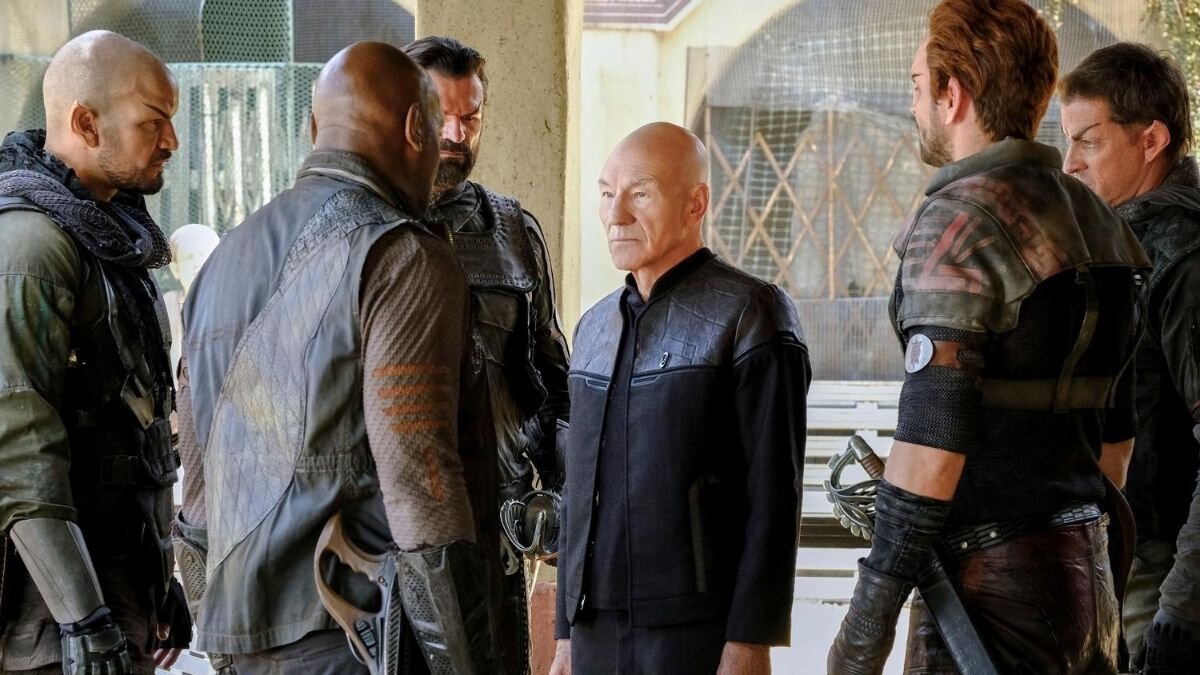On Star Trek: Discovery and Star Trek: Picard and their parallels with modern-day refugees

"Absolute Candor" -- Episode #104 -- Pictured: Sir Patrick Stewart as Jean-Luc Picard of the the CBS All Access series STAR TREK: PICARD. Photo Cr: Trae Patton/CBS ©2019 CBS Interactive, Inc. All Rights Reserved.
NOVEMBER 16, 2020 - Star Trek: Discovery and Star Trek: Picard are helping highlight the plight of refugees in our current world.
A new piece on the website for the Canadian Museum for Human Rights explains the parallels between story elements on Discovery and Picard, and how they draw inspiration from and inspire critical assessment of modern-day refugee issues.
Discovery’s most prominent refugee storyline was that of Commander Saru. We learn the full picture of Saru’s story between the Star Trek: Short Treks episode “The Brightest Star” and the Discovery season two episode “The Sound of Thunder”. Saru was a refugee who left his Kelpian home of Kaminar, which was under strict control by the Ba’ul. Eventually, he returned to his home planet and, with the help of the Federation, helped to change the balance of power between the Kelpiens and the Ba’ul.
Star Trek: Picard dealt with even more overt refugee themes, in particular the events affecting Romulans after the destruction of their homeworld. Prior to the events of Picard season one, Captain Picard is involved with the rescue operation, resettling Romulan citizens as their star went supernova. Then, during the course of the series, we get to see the effects that the disaster and subsequent resettling had on the Romulan people.
The Canadian Museum for Human Rights piece notes that Picard, in particular, draws inspiration for this storyline from real events. For instance, one refugee mentions being relocated on a Wallenberg-class ship called Nightingale, referencing Raoul Wallenberg and Florence Nightingale, two noted humanitarians. Raoul Wallenberg, the piece notes, “was the first person declared an honorary citizen of Canada.”
The Picard story also mirrors the experience of Canadian General (and later Senator) Roméo Dallaire. General Dallaire served as the Force Commander of the UN peacekeeping force in Rwanda in the early 1990s. When he raised the alarm, in early 1994, that a genocide against the minority Tutsi community was imminent, the United Nations denied his request to act, and some half a million people were eventually killed. Dallaire felt personally responsible for the genocide and later gave a speech to a Rwandan crowd saying, “Standing here, I say to you, that Romeo Dallaire, as Force Commander, failed the Rwandan people since January 1994.” Picard, in his speech to the Romulans in “Absolute Candor” said, “The Federation failed you all. I failed you all. I broke faith with you, and the result was terrible. Pain and loss for you all. And I am sorry.”
The Canadian Museum for Human Rights also draws parallels between the plight of Picard’s xBs (former Borg drones) and child soldiers or other combatants trying to reintegrate into society.
The Star Trek franchise has always tried to push boundaries of our understanding of current events, and the latest live-action series are no exception. With their compassionate depictions of refugee issues, they’re helping generate public empathy for refugees and migrants today.
If you’d like to read the full (and much more in-depth) article on human rights in modern Star Trek, please visit the website for the Canadian Museum for Human Rights, at humanrights.ca.






